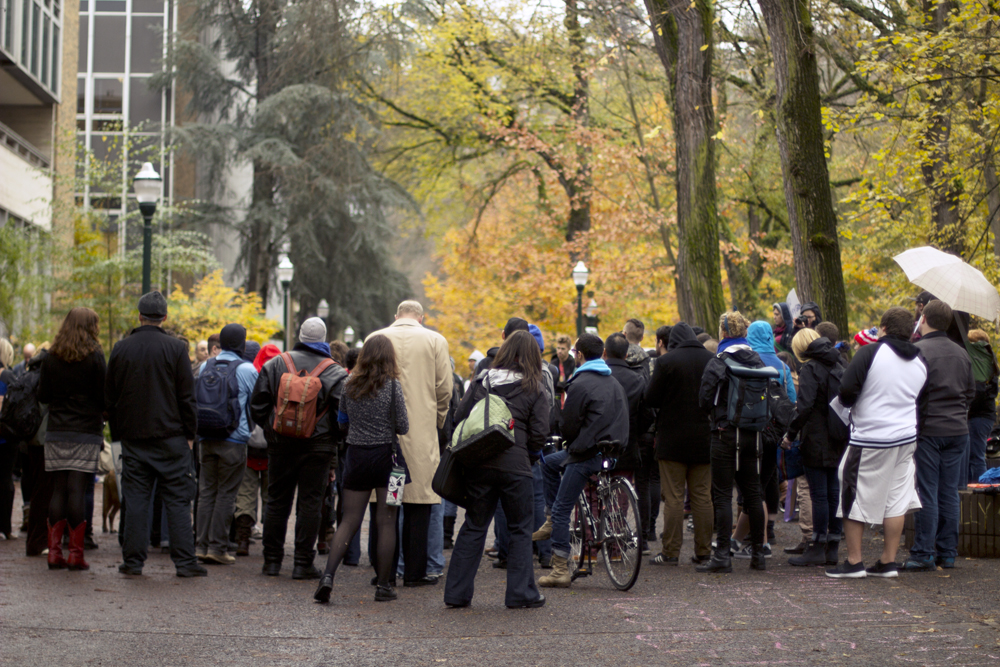The conceit of BioShock has more thought behind it than the typically shallow fare seen in first-person shooters. Set in 1960, the story revolved around an objectivist tycoon that sought to create Rapture, a utopian city on the floor of the Atlantic Ocean.
The fall of Rapture
The conceit of BioShock has more thought behind it than the typically shallow fare seen in first-person shooters. Set in 1960, the story revolved around an objectivist tycoon that sought to create Rapture, a utopian city on the floor of the Atlantic Ocean.
The ideals behind Rapture echoed the individualistic philosophy of Ayn Rand, and had a heavy focus on laissez-faire capitalism and intellectual enlightenment. The city was supposed to be a haven to escape the controlling influences of the state, the media and society.
The problem was that with scientific advancements came rampant genetic alteration by the wealthiest denizens of Rapture, which resulted in widespread drug-like addiction and hideous mutations among the populous. As the “plasmid” industry grew into big business, the disparity between the rich and poor grew.
Needless to say, the social experiment that was Rapture failed—the city fell to ruins and its populous developed into a maniacal army of genetically enhanced freaks roaming the dilapidated cityscape.
While the original game—where the objective was to escape the dystopian nightmare after a plane crash near the city’s entrance—was heavy on themes of free will (or lack thereof) and control, BioShock 2 puts a different narrative spin on the Rapture experience.
This time around you play as a Big Daddy, the hulking, silent, diving-suit-clad creatures that initially served as guardians to Rapture’s Little Sisters, young girls detrimentally involved (through genetic harvesting) with the collection of the material used to make plasmids.
Taking place in 1968, eight years after the events of the first game, you awake to find the city has been taken over by a psychologist whose zealous support for a collectivist, communal society borders on religious fanaticism.
Your task is to find your Little Sister, whom your life is bound to (interestingly, the game’s design doesn’t delineate from take-orders-based progression—and subsequent commentary on free will—of the first game).
Despite the change in cult ideologies, however, your second trip to the city remains very much the same. The collectivist cult that’s overtaken the minds of the city may preach a different system, but corruption remains. From a gameplay perspective, plasmid-enhanced splicers attack you, and you must defend and defeat.
The core design remains fundamentally the same: you must get from one end of Rapture’s waterlogged art-deco infused wasteland to the other, where your Little Sister, a key component to the collectivist cult leader’s destructive plan, is being held.
The numerous firefights and meticulous examination of the game world have been improved on (although this sequel seems a bit tougher in places). In any case, the developers clearly took an approach of not fixing what isn’t broken here—not that that’s a bad thing.
Over the past eight years the splicers have made improvements to themselves, and the original generation of Little Sisters are now all grown up, sporting diving suits of their own and, as brainwashed as the rest of the city, are out for your blood.
Thus, BioShock 2 is a sequel that ensconces itself in the doctrine of improvements most video game sequels try to adhere to. By comparison, the day-to-day of BioShock 2 has you dual-wielding plasmid powers and weapons at the same time, collecting more powers and returning to the morality-design of the first game, either protecting or genetically harvesting Little Sisters you find.
Also new to the sequel is the ability to use your Little Sister to collect plasmid-making materials from corpses, with the caveat that doing so will attract splicers in the area. Basically it temporarily turns the game’s design into one of protect-the-NPC, although the benefits it can yield can be great.
Similarly, you occasionally have the chance to meet characters you’ve been in contact with over radio—a staple of the first game—in the flesh. While not overly impactful, it’s a nice touch that adds to the greater sense of being in Rapture that BioShock 2 delivers.
Finally, your arsenal is a big improvement over the original’s, with an interesting assortment of Jules-Verne-in-the-1960s-esque weaponry—in particular, the Big Daddy’s trademark drill is quite effective for melee, particularly when stacked up against other diving suit wearing monstrosities.
If you were a fan of the original BioShock, there isn’t much question over the caliber of its sequel. While gameplay hasn’t been significantly altered, the narrative and thematic differences present here make for a thoroughly engrossing return to Rapture (that and it’s just fun to return to this dark, interesting world).
Like its predecessor, BioShock 2 is undoubtedly a thinking man’s shooter, which in and of itself is more than enough reason to not pass it up.




